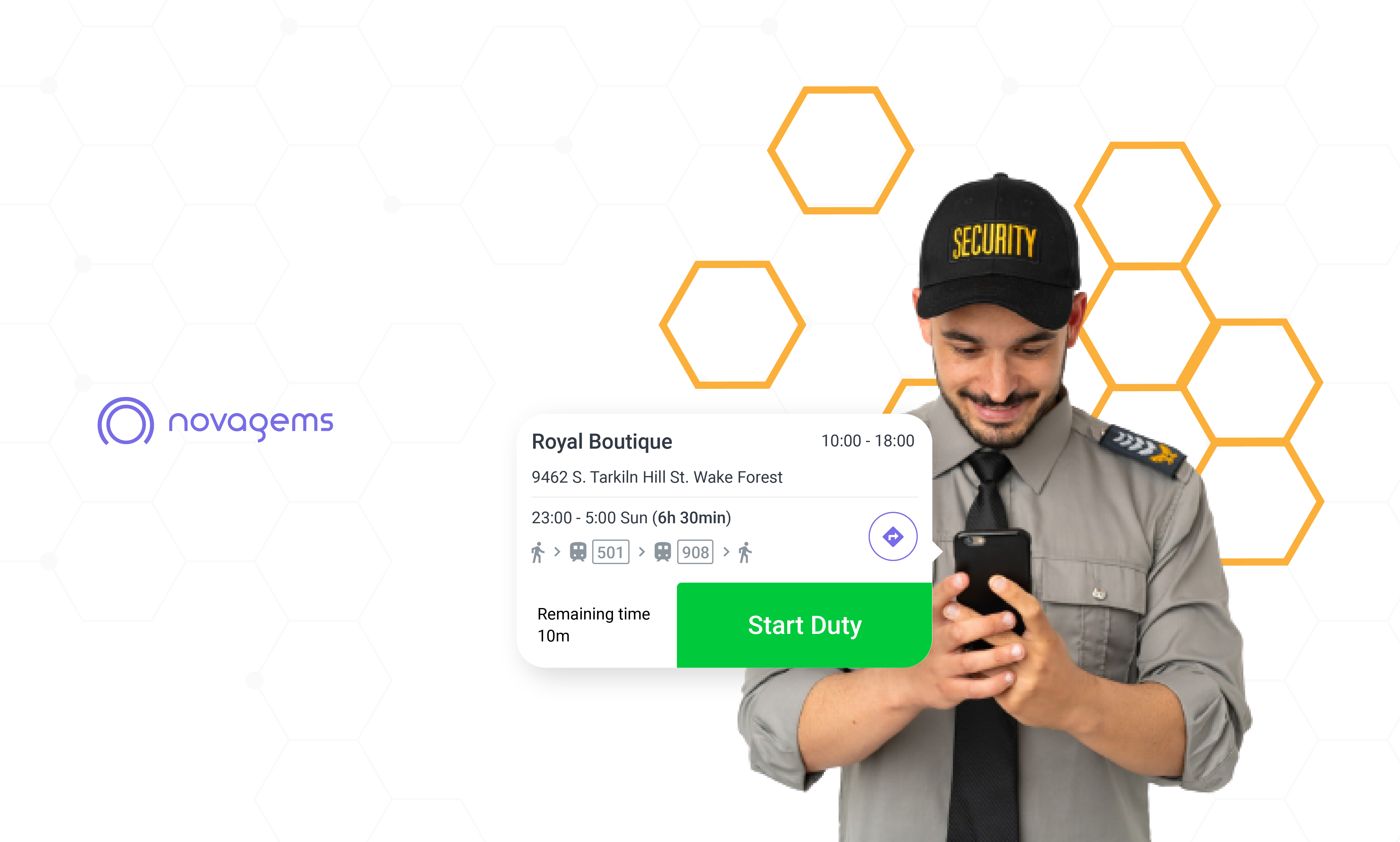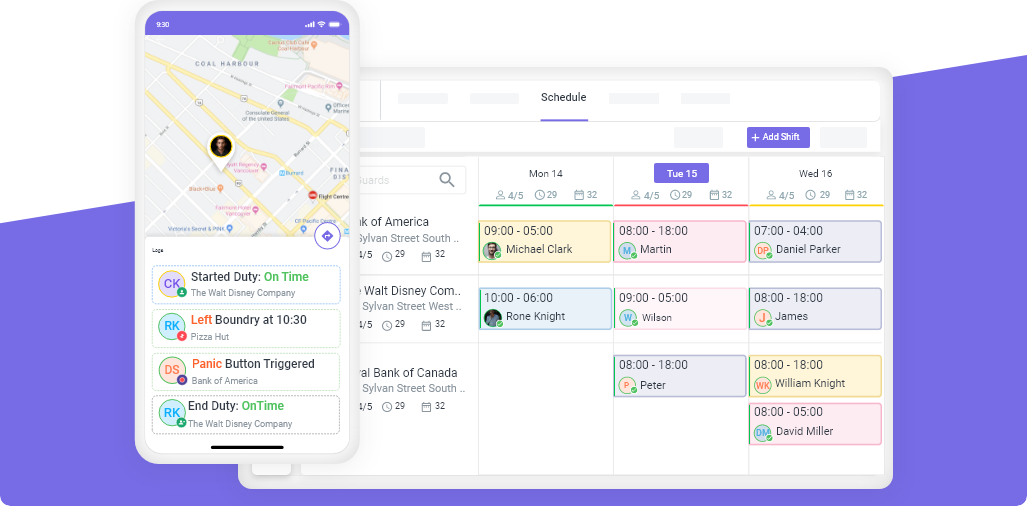How To Boost Productivity: Let Your Employees Manage Their Own Shifts
Tue, Jul 25, 2023
Read in 7 minutes
Discover the power of employee-driven shift management to boost productivity and enhance work-life balance. Empower your workforce with autonomy and engagement, as they manage their own shifts. Learn effective strategies, benefits, and step-by-step implementation to optimize efficiency and foster collaboration. Improve productivity and employee satisfaction with employee-managed shifts

Imagine a workplace where the managers are only allotting the required work to the employees and the employees are expected to just take it and finish it with utmost perfection. You can expect the employee engagement to be zero in such cases with no work life balance whatsoever. Such workplace will not achieve higher productivity levels
But will see a rise in employee burnout and turnover rate.
Boosting productivity with the employee shift management system as calculating employee satisfaction has been the talks of the town for quite a while now. Using effective shift management strategies will skyrocket the sales and profits of the company. Having a highly performing and productive workforce does not mean that the work is being done on time with no errors, there are many other factors that come into play while measuring productivity and employee satisfaction.
Effective communication, team coordination, work-life balance and workforce empowerment will automatically lead to increased job satisfaction. If productivity and profitability are the main goals of any organization then employee self-scheduling is one of the strategies they can use.
In today’s fast-paced work environment, organizations are constantly seeking ways to boost productivity and improve employee satisfaction. One effective strategy gaining popularity is allowing employees to manage their own shifts. This approach empowers employees, giving them a sense of ownership and flexibility in scheduling while aligning their work-life balance.
Benefits of Letting Employees Manage Their Own Shifts
Increased Employee Ownership and Engagement
By granting employees the responsibility of managing their own shifts, they feel a greater sense of ownership over their work schedules. This increased autonomy leads to higher engagement levels and a stronger commitment to their roles within the organization.
When employees have a say in their work schedules, they are more likely to feel invested in their roles and engaged with their work. Establish a good communication and feedback loop which will result in great collaboration. Your employees will be more productive when -
- They are given ownership of their work
- Have responsibilities for the output
- Are held accountable
As an organization some responsibilities fall on their shoulders as well. It’s not only the liability of the employees to maintain the quality of their work. As an organization you can enhance employee engagement -
- Equipt the employee with proper resources
- Give the workforce enough freedom to make decisions
- Remove roadblocks
Improved Flexibility and Work-Life Balance
Improving flexibility and work life balance is another way to encourage positive productivity. It will help you in the long run as if the employees are taking care of themselves then that means they can take care of their tasks and job duties as well.
Flexible work arrangements have become a priority for many employees. Allowing them to manage their own shifts gives them the freedom to balance personal and professional commitments effectively. This flexibility contributes to better work-life balance and reduces stress, resulting in increased productivity and job satisfaction.
Different employees have different scheduling needs and preferences. Allowing them to manage their own shifts enables greater flexibility in meeting those needs. For instance, employees with family responsibilities or other personal commitments can adjust their schedules accordingly, leading to a better work-life balance.
An enhanced employee shift management will help the employees to refresh their daily routine and they can take a break from monotonous work. Optimize work-life balance
Through various mean. This helps the employees in -
- Reduce stress
- Improve mental and physical health
- Increase efficiency
- Adapt to changing circumstances
Enhanced Collaboration and Communication
Communication is a two way process that helps to build trust in employees and the organization. Having poor interpersonal communication leads to less motivated employees, performance and engagement. Increase productivity at work with simply having better communication channels within the organization.
When employees have control over their schedules, they can better coordinate with their colleagues. This freedom facilitates collaboration and effective communication among team members, as they can plan meetings, projects, and tasks based on their mutual availability.
You can have clear communication with your team members by simply-
- Helping the team in resolving roadblocks
- Get them on track if they ever get confused
- Explaining the goals and expectations of the company
- Listening to any problems the employees are facing
They can communicate and negotiate schedule adjustments directly, ensuring that there is adequate coverage and a smooth transition between shifts. This flexibility promotes teamwork and avoids scheduling conflicts that could hinder collaboration. Team coordination is essential for smooth running of any organization.
If you host casula one on one meeting, team building exercise, outings, get togethers and proper welcoming of any new employees then also you can have improved efficiency.
Steps to Implement Employee-Managed Shifts
Step 1: Set Clear Expectations:
Establish clear guidelines and expectations for employees regarding shift management. Clearly communicate the goals, boundaries, and limitations of the self-management system. Ensure that employees understand the importance of maintaining proper coverage and meeting operational needs while having flexibility in scheduling.
Step 2: Define Core Hours and Shift Requirements:
Identify the core hours during which all employees must be present or have sufficient coverage. Determine the minimum number of employees required for each shift based on workload and operational demands. This ensures that the self-management system still meets the organization’s needs.
Step 3: Provide Scheduling Tools:
Offer user-friendly scheduling tools or software that employees can use to manage their shifts effectively. These tools should allow employees to view the existing schedule, make requests for time off, swap shifts with colleagues, and communicate scheduling changes seamlessly. There are many software applications that can assist you to improve workforce efficiency with minimal headache.
Step 4: Establish Clear Procedures:
Develop clear procedures and protocols for shift swaps, time-off requests, and schedule changes. Outline the steps employees need to follow when making changes, including who they need to inform and any deadlines for submitting requests. This helps maintain organization and ensures smooth coordination.
Step 5: Train and Support Employees:
Provide training to employees on how to use the scheduling tools and follow the established procedures. Offer support and assistance in understanding the system and its implications. Encourage open communication and address any concerns or questions employees may have.
Step 6: Foster Collaboration and Communication:
Encourage employees to collaborate and communicate with one another when managing their shifts. Promote a culture of teamwork, where employees are willing to help each other by swapping shifts or covering for one another when needed. This promotes a sense of ownership and responsibility among employees.
Step 7: Monitor and Evaluate:
Regularly monitor the self-management system to ensure it is functioning effectively. Assess the impact on productivity, employee satisfaction, and customer service. Gather feedback from employees about their experience with the system and make adjustments as needed. This was employees can work on their skills as well.
Step 8: Maintain Flexibility:
While employees manage their own shifts, it’s important to maintain flexibility to accommodate unexpected changes or unforeseen circumstances. Have backup plans in place to handle emergencies or sudden scheduling gaps. Even if the employees are facing any issues they want to swap their shifts, allow them some flexibility within reason. Shift swapping has become a common norm nowadays so to accommodate the staff and to keep the operations running smoothly it is the most appropriate way.
Step 9: Recognize and Reward Performance:
Acknowledge and reward employees who consistently manage their shifts responsibly and contribute to the overall productivity of the organization. Recognize their efforts and provide incentives to encourage continued engagement and commitment.
Conclusion
Improving workforce efficiency is no easy task. But it can be simplified with a smart automation software such as Novagems that allows the management to handle shifts scheduling easily.
Empowering employees to manage their own shifts can be a game-changer for productivity and employee satisfaction. By granting autonomy, organizations create a culture of trust, ownership, and flexibility.
By embracing this progressive approach, organizations can reap the rewards of a more engaged and productive workforce, leading to improved operational efficiency and a positive work environment.
Get a Free Trial
Sign up For Newsletter
Latest Blog Posts
Get Started
Start being productive & grow your business
with Novagems




